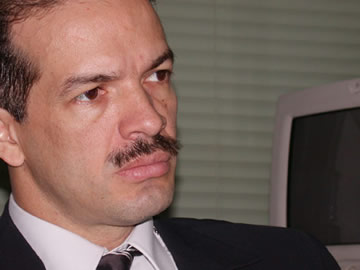The government handled the testimony and the silence of the “star witness.” The Constitutional Chamber of the Supreme Court erected a fence around Giovanny Vásquez de Armas, the man whose testimony was key to accuse the suspects of the murder of prosecutor Danilo Anderson.
Before the investigations began, the government linked the attack that took Anderson’s life, on November 18, 2004, to a conspiracy. “Anderson was involved in cases of major impact for society in recent years, including the Plaza Francia massacre, the assault on the Cuban Embassy, the killings of April 11 (2002) and the latest investigation of former mayor Alfredo Peña and his team. This confirms that his death involves a great number of hypotheses,” said the then Minister of Communications Andrés Izarra, who described the event as a “political murder.”
During the funeral, President Hugo Chávez said that “the attack on Danilo is against me, is against all of us, is the attempt to kill a process of real and profound changes,” and he added: “This shows that is always important to distinguish between the democratic opposition and the coupsters.”
Vásquez de Armas’s testimony supported the official hypothesis and led to a series of actions against people in the opposition, including retired general Eugenio Áñez Núñez, journalist Patricia Poleo and banker Nelson Mezerhane, a shareholder of news channel Globovisión.
Over time, the “star witness” became one of the main protagonists of this story. In an attempt to keep the spotlight away from this new player in the plot, a court granted the request of the Public Prosecutor, and on January 23, 2006, banned the media from publishing information about the proceedings of the Anderson case and any information about the private life of Vásquez de Armas.
One month after the court decision, the case reached the Constitutional Chamber of the Supreme Court, which was requested to lift the ban on the grounds that it was considered censorship. The response came on July 19, 2006, in a presentation by Justice Marcos Tulio Dugarte, who rejected the request for formal reasons.
However, the facts would end up lifting the veil imposed by the Supreme Court. In April 2008, Vásquez de Armas’s attorney himself revealed that his client had been paid $500,000 to participate in the “montage” of the Anderson case. “He was given $500,000 to participate in this plot,” confessed the legal adviser of the “star witness.” Former Attorney General Isaías Rodríguez denied the allegations and said Vásquez de Armas was “crazy.” Not even the Supreme Court could stop this scandal.”
Extract of the judgment
the appeal for protection filed by the petitioners should not have been admitted by the constitutional court in the first instance as it is inadmissible due to the lack of legitimacy (…) The Court sees that, although they made certain allegations justifying the use of the protection measure, they did not show any evidence of why ordinary remedies would be ineffective; thus, in the view of this Court, there was no excuse for the use of protection measure as substitute for ordinary measures (…) the Court verified that this act is detrimental to constitutional rights (…). Therefore, the petitioners had judicial remedies at their disposal in the criminal procedural law, which are suitable for the restoration of the allegedly violated constitutional rights (…) which were not exercised in due course”.
